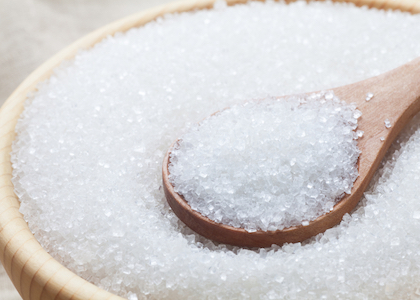
Sugar and Your Brain: Why Sugar Is So Very Addictive
By Rachel Gargano MS, RD, LDN, CSSD
A typical grocery store has upwards of 20,000 different packaged foods, and nearly 75 percent of these foods have added sugars. That’s right: Three-fourths of our food supply is pumped with the sweet stuff. It’s no wonder sugar addiction runs so rampant in our society.
Carbohydrates are broken down into sugar, which is essential for life. Every cell in our body uses glucose for energy. However, the amount of sugar that we take in can greatly affect our health. Too much may lead to diabetes, weight gain, cancer cell production, behavioral changes, heart disease, wrinkles and ultimately a shorter lifespan.
Studies show that sugar lights up the same exact area of our brain that is stimulated by drugs. For some people, the highs, lows and withdrawal from sugar can be just as powerful and dramatic as what a drug addict experiences.
What Makes Sugar So Addictive?
When we eat sugar, the pleasure center of the brain releases dopamine, a natural opioid in the brain which makes us feel good. Who doesn’t want to feel this good? So we consume more…and more. And because we are eating so much, the pleasure signals get weaker so we have to eat even greater amounts of it to get the same “high.” Then we try to “be good” and reduce our consumption, but this causes withdrawal symptoms. This is addiction.
How Can You Tell If You’re Addicted?
Addiction to sugar is most obviously seen as very strong cravings for carbohydrates and sweets. If you feel anxious thinking about taking these foods out of your diet, you are likely addicted and worried about withdrawal symptoms. If you eat these foods even if you aren’t hungry, or if you need more and more of these foods to get the same pleasure, these are big symptoms of addiction.
What Are the Symptoms of Sugar Withdrawal?
Cutting out added sugar completely for two weeks can help you reset your tolerance for sugar and minimize cravings. During this time you may feel fatigued, anxiety, headaches, mood swings and strong cravings. For some people, cravings stop after two to three days, and most people stop having symptoms after six days.
But once you get through your two week detox, you likely will have reset your palate, will require less sugar to feel satisfied and will have a new appreciation for food flavors in their natural form.
Here are three tips to help you get through and prevent cravings:
- Prevent hunger. Hunger is the primary undermining factor in staying on track. If you are physically hungry or having cravings, eat some quality protein combined with vegetables. If these foods are not available, drink a big glass of water and eat a piece of fruit.
- Take a two-minute food time out. Sit in a room away from food, place your hand on his stomach and take some deep breaths. Connect your thoughts with your physical being. Ask yourself: What do you really need in this moment? What will you do so that you feel good tomorrow?
- Get active. A short stent of physical activity, even low intensity, can help release endorphins. These are another type of feel-good chemical that can help reduce cravings. Take a walk, do some squats, walk the stairs…just get moving for a bit!
Looking for more ways to battle your sugar addiction? Learn more about our special Guided Reboot for Sugar Addiction beginning on September 29. During this Guided Reboot, we will literally retrain your brain to crave healthier foods! I’ll be with you every step of the way through this Guided Reboot, as we commit to dropping pounds and breaking the sugar addiction once and for all.